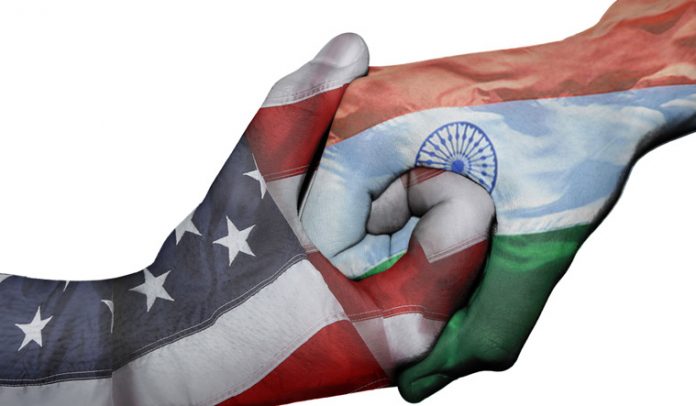Under Biden and Harris’s presidency, US-India relations prove to be the defining alliance among global powers. The “Steller” partnership between the two countries, will help optimize global resources and drive-in development. The US and India are in a position where they both need each other. The successful association will depend upon how the US engages with India. The US should look at India as an equal partner rather than a subordinate. Going forward, strategic cooperation between the two will create a “win-win” situation for both countries.
India and the US appear to be considering ways to improve their bilateral trade matters. They look forward to revitalizing engagement through the US-India Trade Policy Forum, discover directions to expand trade relationships, and cooperate on a broad set of issues. Meanwhile, Union Minister of Commerce and Industry Piyush Goyal’s opinion of India being cautious in its attitude to trade deals and ensuring reciprocity can be questioned to the trade relationships. Developing on its existing policies, India, thereby, should embrace foreign ties and indulge in inclusive growth measures.
Assessing the gamut of bilateral and multilateral exercises, the two sides have placed three foundational agreements – LEMOA allowing sharing of logistics, BECA geospatial mapping, and COMCASA allowing real-time information sharing to realize strong hold partnership. Modern sectors of coalitions including information-sharing, logistics cooperation, AI, space, and cyber are being advanced to strengthen their stature. Furthermore, consolidating the synergy and interoperability accomplished during the Malabar exercise, India and the US also undertook a two-day naval exercise in the eastern Indian Ocean Region, expressing the growing congruence in their defence and military partnership.
The White House is also considering supporting the move of India and South Africa seeking a time-limited waiver of the Trade-Related Aspects of Intellectual Property Rights (TRIPS) agreement which would allow countries and manufacturers to directly access and share technologies to produce vaccines and therapeutics without causing trade sanctions or international disputes.
As the United States and India get closer, they also appear to be taking their space cooperation to a higher orbit. NASA and ISRO collaboration on satellites to support the NISAR mission marks another partnership deal to enhance management of the world’s natural resources and disaster preparedness.
India and the US have decided to revise the existing energy cooperation framework to focus more on clean energy maintaining advanced American technology and the rapidly growing Indian energy market in mind to indicate new priorities set by the two nations. Galvanizing efforts by the major economies to tackle the climate crisis, the US president has also invited 40 world countries to the Leaders Summit on Climate. India being one of them needs to outline its contribution towards a stronger climate ambition. It should focus on spurring transformational technologies, strengthening capacity to protect lives and livelihoods from the impacts of climate change, and address the global security challenges. Further, John Kerry has visited India calling it a “red hot investment opportunity” and believes that the “world’s two biggest democracies should join hands on confronting climate change.” He said that “decisive action by India will determine what this sustainable transformation will mean for generations to come.” His remarks for India to be the “major player on the global stage” define the primacy of India-US relations.
There is also an opportunity for both countries in the shipbuilding industry. Utilizing the strategic trade authorization license exemption granted by the US to India in 2018, and the bilateral Industrial Security Annex Agreement signed in 2019, India and the US can join efforts to produce the world’s finest and most economical platforms for their partners and friendly nations.
Experts believe AI and emerging technologies will further define relationships between countries. India should look for opportunities to use its potential and establish its ‘footprint’ in AI and emerging technology. Proactive regulation that protects data privacy; prevents inequitable mergers, anti-competitive practices, and competition law; guarantees free and fair taxation should be the steps ahead. Fair regulations eliminating uncertain and excessive control in a manner that protects the rights of citizens, while businesses are not severely impacted will bring different stakeholders to the common table of discussion.
The US must be more considerate of the immigration laws. At a juncture where Biden opts to lift the ban on H1-B visa in an attempt to reverse the curbs, greater inclusiveness between Indian IT firms and the US territory are to be seen. Moreover, the Federal Government’s order to combat racism, xenophobia, and intolerance against Asian Americans and Pacific Islanders will further advance inclusion and belonging for people of all races, national origins, and ethnicities.
As India and the U.S. grow closer, engaging in economical parameters, democracy projects demand high cooperation and collaboration on the global front. It is the time when the coalition should take a step ahead from a people-to-people strategy to ground-led strategies. Both the nations should come on a common platform to address rising socio-economic and geopolitical issues sharing a unified vision. Advancing on present bonding between the two countries, powerful ties will be witnessed in times to come.








